Anyone who’s walked the Reef Bay Trail on St. John knows the challenge of the three-and-a-half-mile hike down the steep rocky path and the greater challenge of the three-and-a-half-mile climb back up.
Now imagine doing it at night, with a headlamp and a bug net over your face to keep the light-dazzled insects from flying into your eyes and mouth.
That’s what three women based in New York City did this summer when they came to research the populations of bats and frogs on St. John.
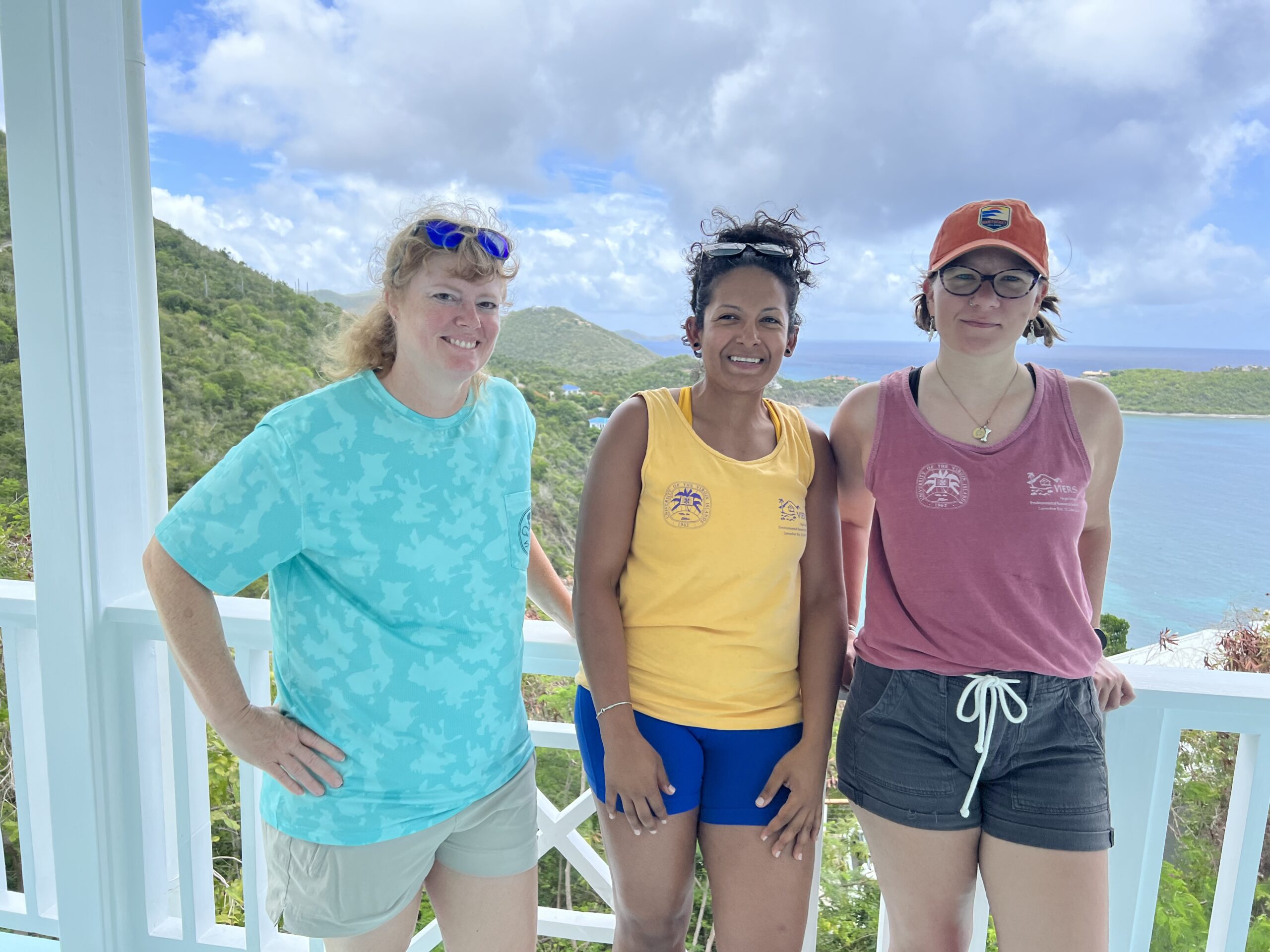
Bat researcher Danielle “Dani” Fibikar, frog researcher Pearl Cales, and Staten Island Zoo curator Cathy Eser spent two weeks on St. John in July. They were looking for populations of bats and frogs, some missing since the hurricanes of 2017. They also spent several days on Jost Van Dyke (in the British Virgin Islands) searching especially for an endangered frog species, the Mute coqui, with a researcher there.
Their trip brought some good news and some bad news. Now, at the year’s end – a time of reflection on what has been gained and lost – it seems appropriate to catch up on our communities of frogs and bats.
Reef Bay Ruins Bat Population Disappeared
Before the storms of 2017, hikers to the Reef Bay Sugar Mill ruins would look at the ceiling and gawk and the numerous Jamaican fruit-eating bats, Artibeus jamiacensis, that roosted there by day. Many repeat visitors to the ruins wondered what happened to the bats after hurricanes Irma and Maria destroyed the roof.
Since the storms, observers have noted a population of the Jamaican fruit-eating bat at the nearby Par Force Great House ruins, and in July, Fibikar counted about 160 roosting there. She can’t say whether the bats at the Par Force Great House are the same ones that dwelt in Reef Bay, but she was heartened to see a good-sized colony.
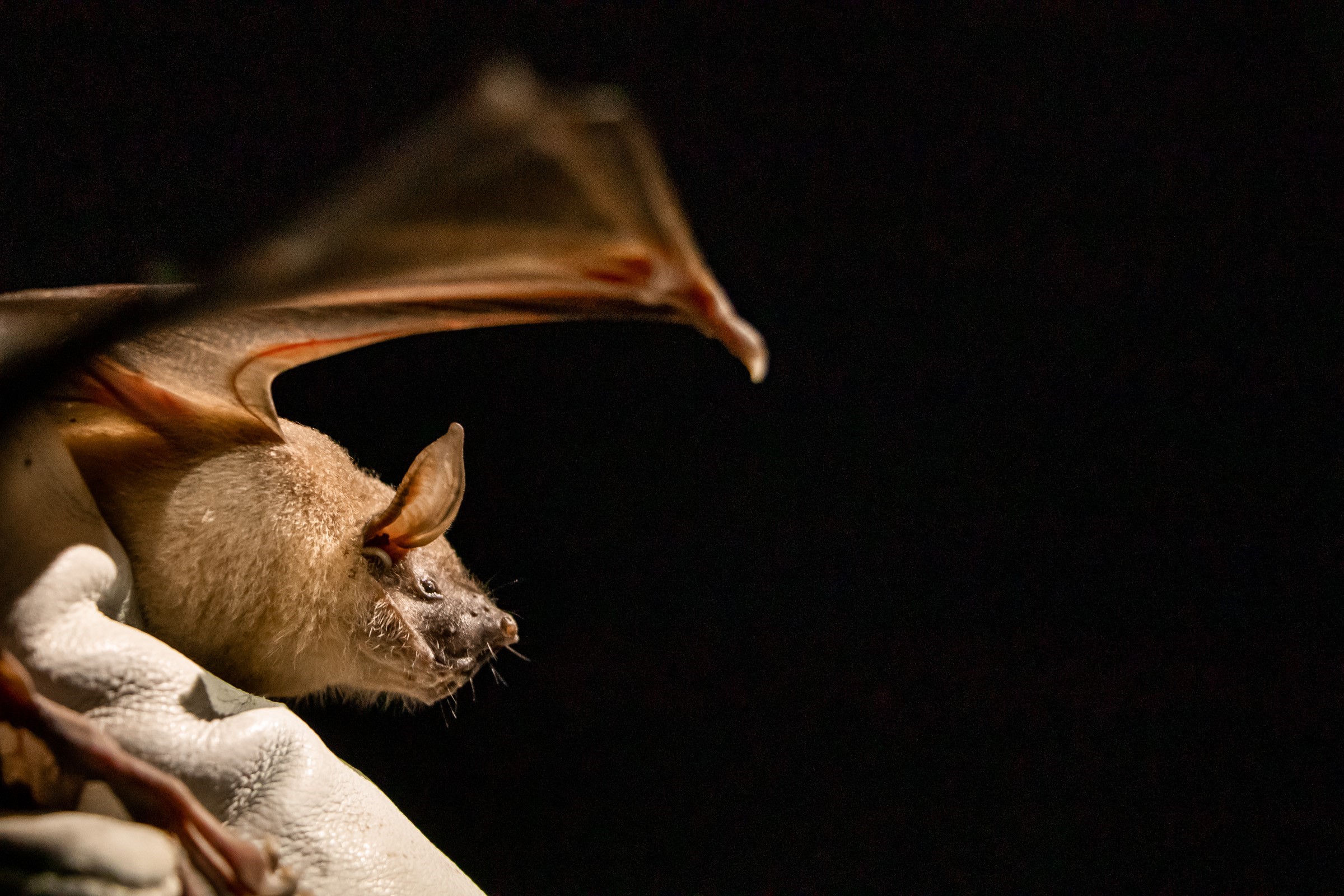
To research bat populations, Fibikar and her colleagues go out at night and stretch a net across a potential flyway. When they catch a bat, Fibikar takes its measurements, assesses its health, determines its sex, and if the bat is a female, checks to see if she is lactating. Then, the bat is released.
The populations of little velvety free-tailed bats or Pallas’s mastiff bat, Molossus molossus, seem to be doing fine, Fibikar said, as are the larger fish-eating bats.
“We caught 15 fish-eating bats at Lameshur, near VIERS, near the petroglyphs at Reef Bay. We have also seen them fly out of a cave on Europa Point as well as from the mangroves in Great Lameshur,” she continued.
The team has banded bats in the past, including the fishing bat or greater bulldog bat, Noctilio leporinus. A couple of those bats banded before the hurricanes were captured again after the storms, showing the incredible resilience of these creatures.
“Fish-eating bats are large with a very distinct musky smell,” Fibikar said. “You can smell them fly by without even seeing them. They use their echolocation as they fly over the water and detect ripples of small fish near the surface. Then they scoop them up with their impressive feet.”
The team has also found Antillean fruit bats, Brachyphylla cavernarum, after the 2017 hurricanes, capturing four in 2019 — two in the Lameshur area and two near the petroglyphs — said Fibikar.
But one other species of bat seems to have disappeared: the red fig-eating bat Stenorderma rufum, hasn’t been seen on St. John since 2016. They hope to find the species by using mist-netting as well as a “bat detector” in hopes of picking up their calls.
Bats are reputed to carry rabies, but there have been no known documented cases in the Virgin Islands. Fibikar advises visitors to the Par Force ruins to wear masks as a health precaution, both for themselves and the bats and to avoid walking under them or disturbing them in any way.
In recent years, bat populations in Europe and North America have been decimated by white-nose syndrome, a disease caused by Pseudogymnoascus destructans, a cold-loving fungus that affects cave-roosting bats.
Fibikar says the fungus is an invasive species brought over from Europe. Experts believe it was transported in the dirt on the shoe of a traveler who then spread the infection to a cave in Albany, New York. Since 2007, the disease has spread throughout North America, so she cautions hikers to always clean and disinfect their boots before hiking in a new location.
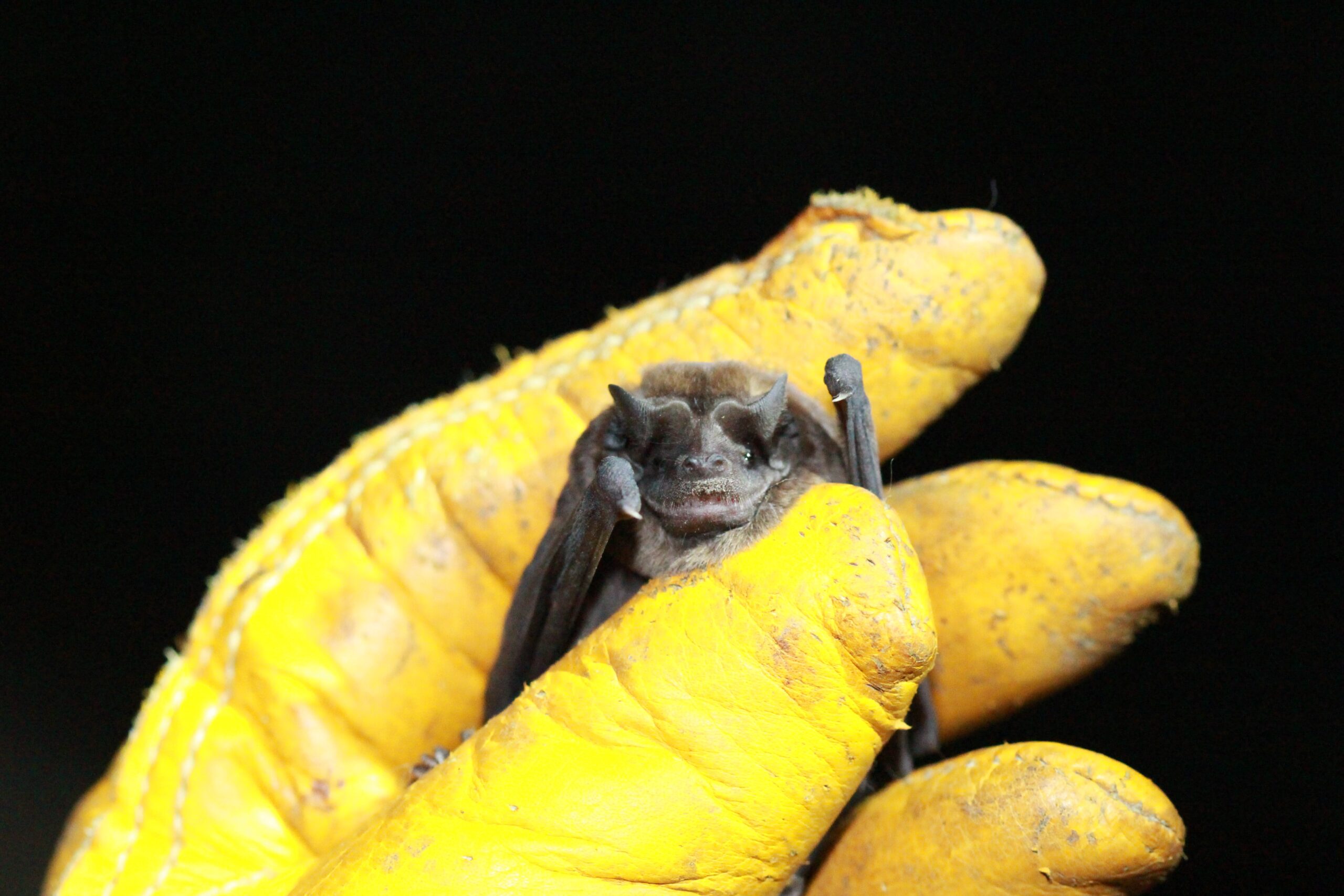
Although tropical bats are not susceptible to white-nose syndrome, they may be affected by leptospirosis, a water-borne disease spread by bacteria. Fibikar has taken blood samples of the St. John bat population to find out if the disease is present.
Frog Populations Are Rebounding
Cales, who has been coming to St. John to research frogs for 10 years, had a special goal in mind this past summer: to generate additional information on the Virgin Islands yellow frog, Eleutherodactylus lentus, also known as the Mute coqui, which she rediscovered in 2019 in Cruz Bay.
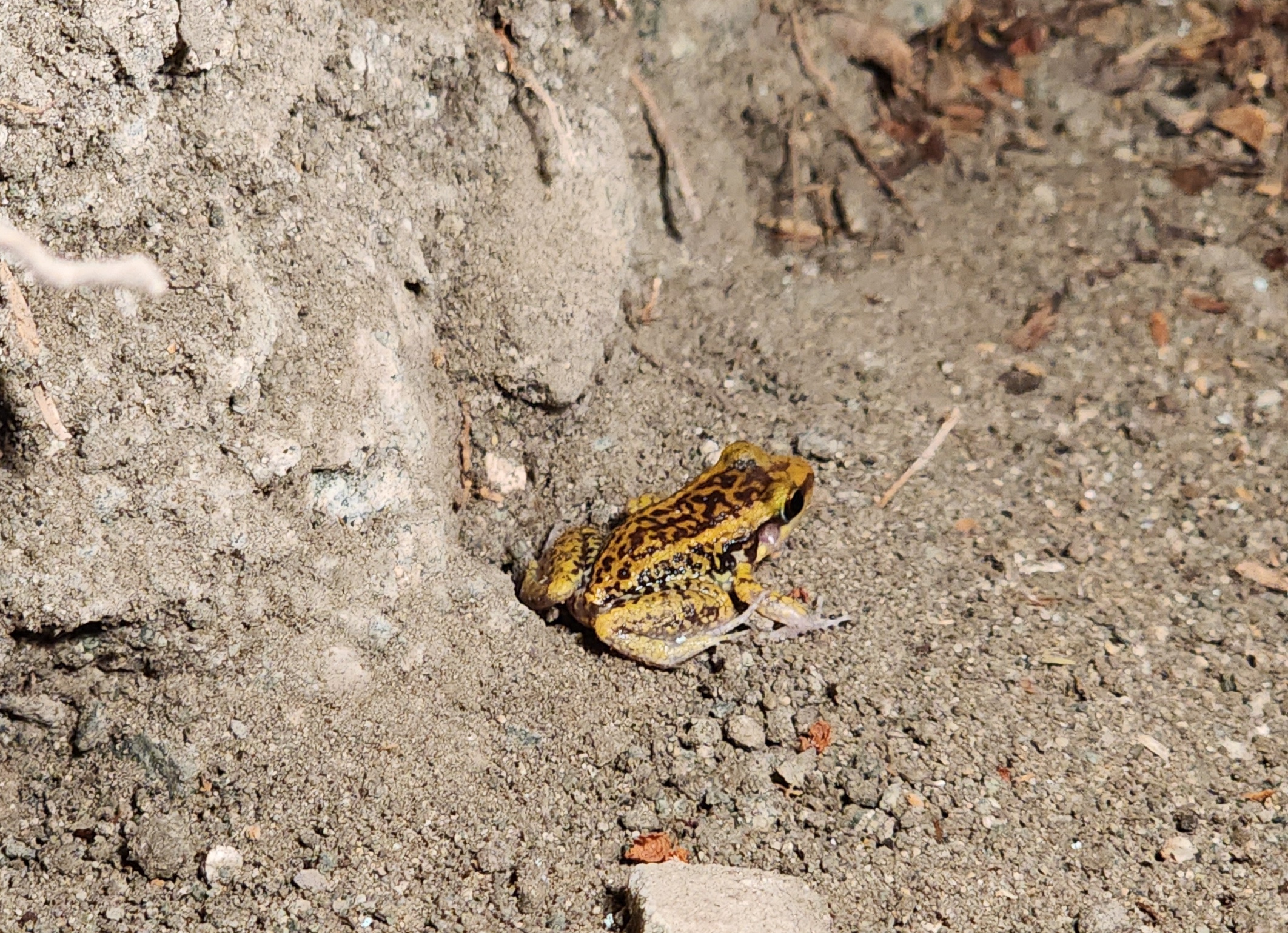
In spite of its name, the Mute coqui isn’t actually mute. It makes a very soft “tik-tik-tik” sound, usually between 2 and 4 a.m. when researchers tend to sleep. Cales now surmounts this problem by setting up-all-night recording devices at sites where Mute coquis are thought to live.
As part of her studies since 2014, Cales and her colleagues typically set out at sundown to conduct roadside frog surveys along Centerline Road and beyond. They begin at Estate Adrian and pause every half-mile to listen for frog calls. After several hours, they finish their roadside survey at Lameshur Bay, nine-and-a-half miles down the road.
“This type of survey provides a basis for trends in amphibian abundance, both for native and invasive species,” she said. Additional surveys are done by foot in areas that may be unreachable by car.
Over the years, Cales has found all seven known species of frogs that live on St. John; four are native and three are invasive.
The one whose sound is most familiar to visitors and residents is the invasive Puerto Rican coqui, whose shrill call of “co-kee” is now heard throughout St. John. “There’s been a huge increase of Puerto Rican coquis, which have been known to hitchhike to the island on imported lumber and plants,” Cales said.
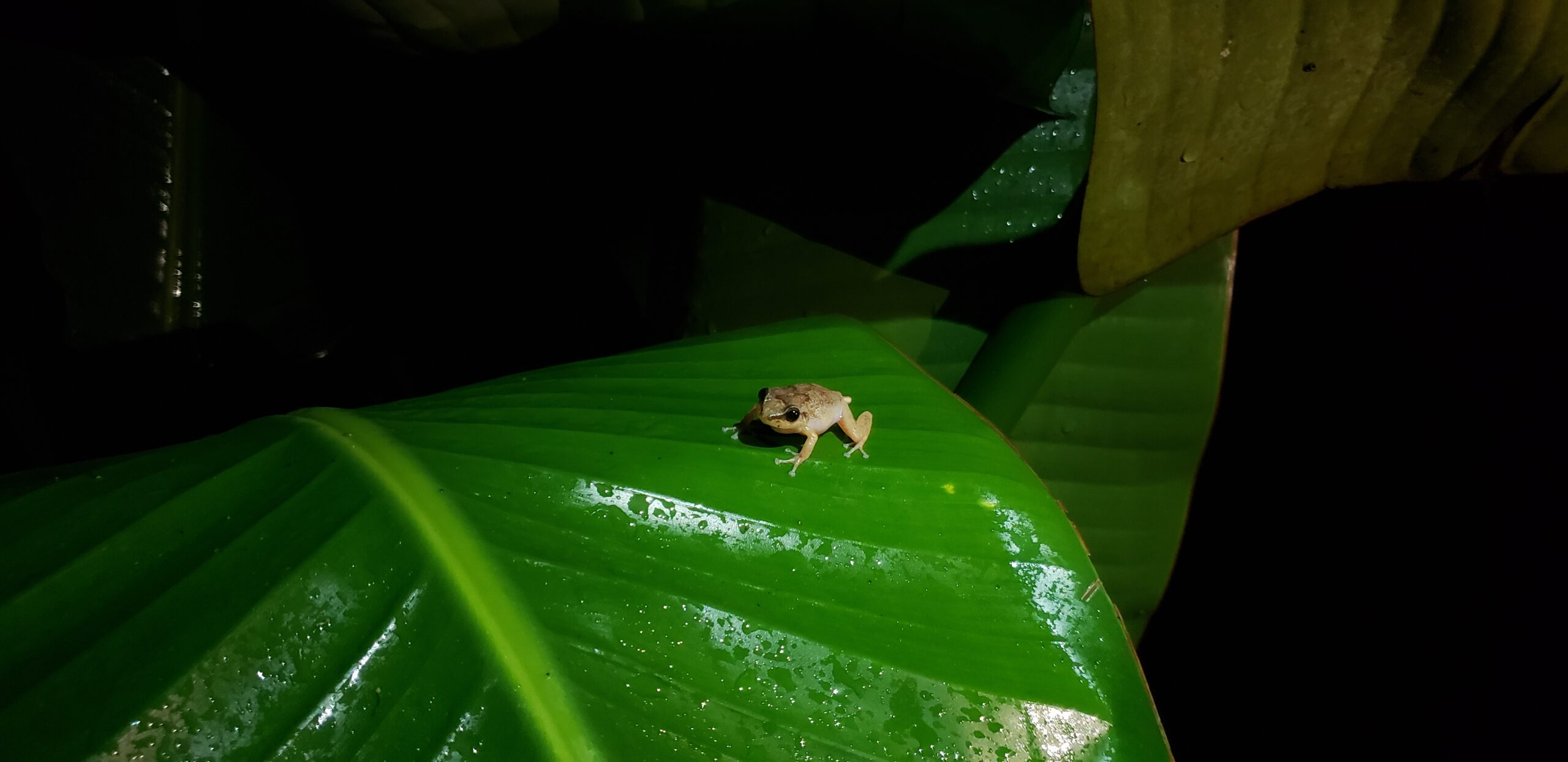
In addition to the endangered Mute coqui, the other three species of native frogs are the Puerto Rican red-eyed frog, which makes the call “bridick bridick,” the Puerto Rican whistling frog, which makes a shrill “weeeee” sound; and the Antillean white-lipped frog, which sings out “pink pink pink.”
The native Antillean white-lipped frog is a “ditch frog,” inhabiting temporary vernal pools (or puddles from rainstorms), streams, swimming pools, and cisterns. Cales has even found them in the toilets at the Virgin Islands Environmental Resource Station at Lameshur.
Aside from the Antillean white-lipped frog, the other three species of native frogs (as well as the invasive Puerto Rican coquis) tend to live in the axils of bromeliads or the canopy layer of trees or near streams and cisterns. Unlike most stateside frogs, they are “direct developers,” hatching directly from eggs when water is present and skipping the tadpole stage. (Additional species of direct developers can be found in other parts of the world, Cales said.)
Virgin Islands residents are also familiar with two other larger invasive frogs, the Cuban tree frog, whose call sounds like a squeaky rocking chair, and the even larger cane toad, which produces a rumble-like sound as well as a toxin from the paratoid gland located at the back of the head, just behind the eyes and ears. (Hapless pets that eat these toads often die.)
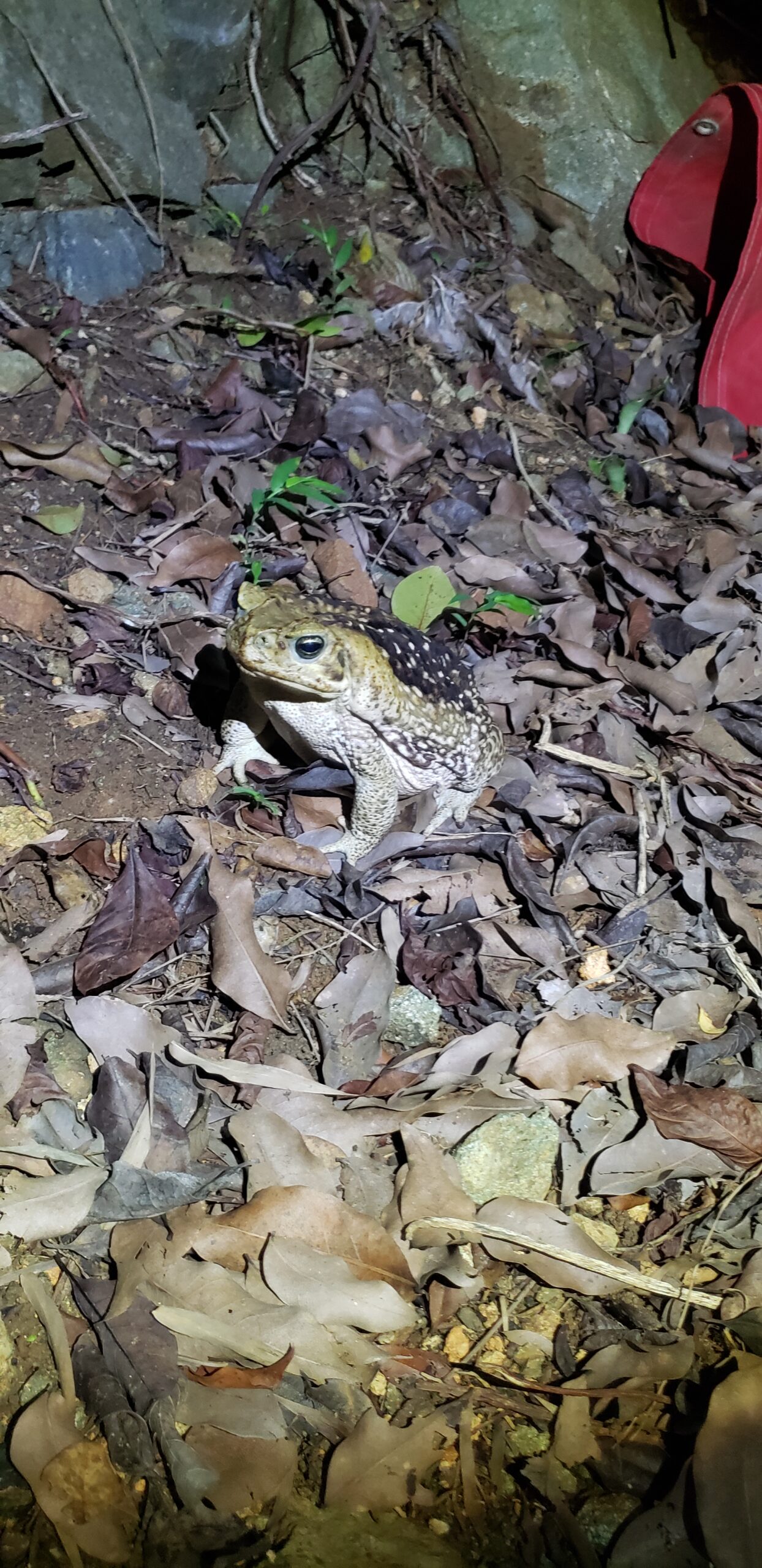
Related Links:
V.I. Bats Struggle for Comeback after Hurricanes
Two Years After Irmaria: V.I. Bats Hanging On
Two Years After Irmaria: Getting a Count of Frogs
Editor’s Note: This story has been corrected to reflect that the team, after reviewing its research, did find Antillean fruit bats, Brachyphylla cavernarum, after the 2017 hurricanes, capturing four in 2019.





